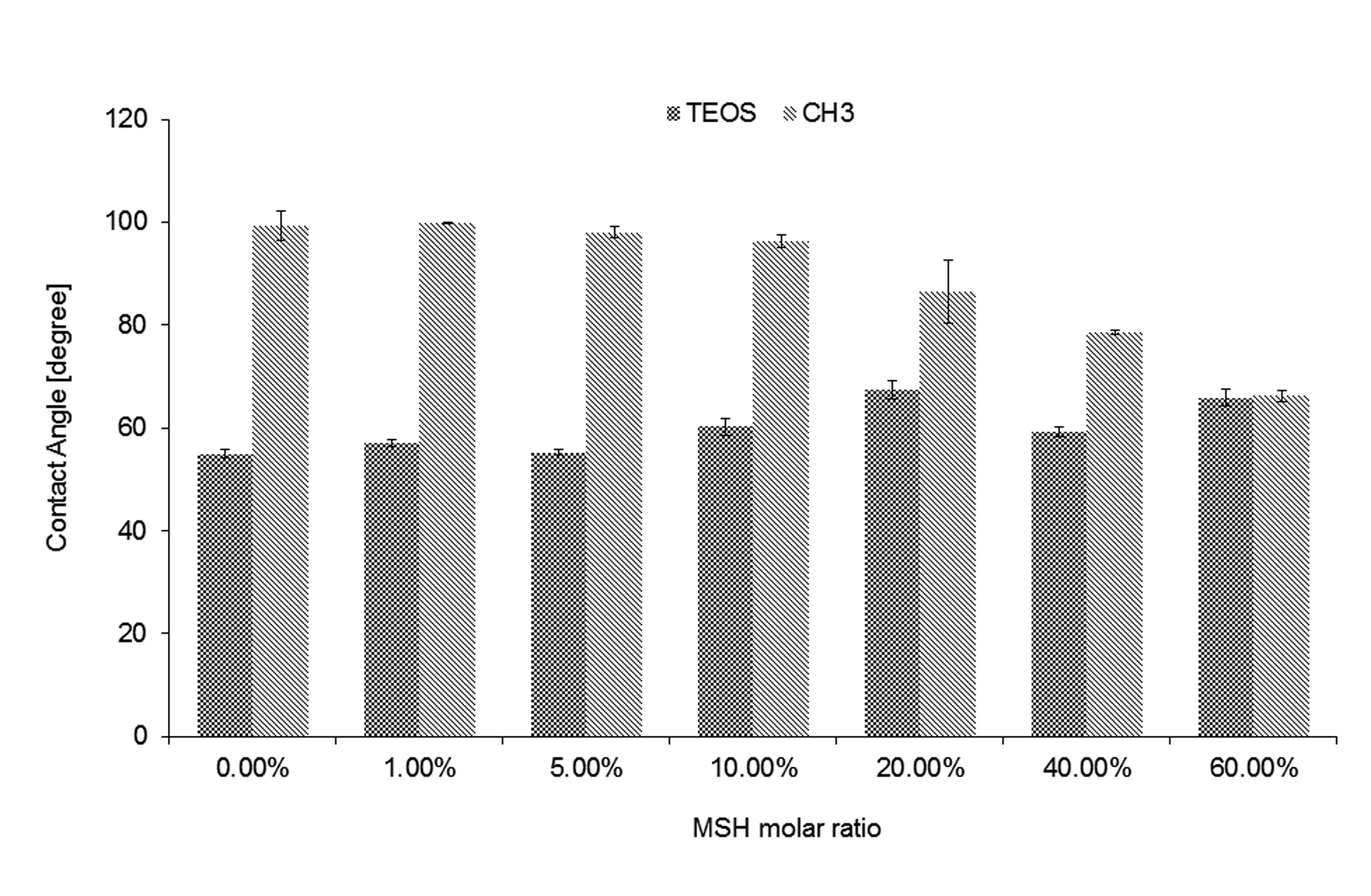Introduction: Sol-gel followed by dip coating allows to deposit thin films (thickness < 1 μm) on a wide variety of substrata, with a simple and inexpensive equipment. With this method, it is possible to functionalize the surface by using different alkoxides at different molar concentrations in mild conditions. Cell adhesion is a complex process that allows the binding of cells to a surface. Adhesion occurs from the interaction between some specific motifs of transmembrane proteins and the adsorbed protein layer on the surface. Mechanisms underlying this process are of great interest but still unclear. [1]-[3] The aim of this work was to investigate the possibility of using sol-gel followed by dip coating to obtain thiolated surfaces with different wettability. These platforms should be a powerful tool to study cell adhesion mechanisms.
Materials and Methods: Sols were prepared by mixing TEOS or n-Propyltrimethoxysilane.(hereafter referred to as CH3) with different amount of (3-Mercaptopropyl)trimethoxysilane (hereafter referred to as MSH) in order to obtain thiol-functionalized surfaces with different wettability. All the surfaces have been characterized in terms of thickness, roughness, contact angle and density of functional groups. Preliminary cells adhesion assay have been performed by using HeLa cells.
Results and Discussion: Homogeneous glass surfaces coated through sol-gel dip coating process by using MSH, in combination with TEOS or CH3 have been obtained and characterized in terms of thickness, roughness, contact angle and density of functional groups. As expected, the thiols content on the surfaces increased by increasing the MSH content in sol. TEOS-based surfaces showed a decreased wettability by increasing the MSH content in sol, while CH3-based surfaces showed an opposite behaviour, as it is possible to see in figure 1.

Figure 1: Contact angle of the different surfaces depending on the molar ratio of MSH in the starting solution
Preliminary results on HeLa cells seeding showed that the number of adherent cells increased by increasing the thiol density on the surfaces.
Conclusion: The use of sol-gel dip coating technique allows to fabricate coatings that can be used as substrates for studying thiol-mediated cell adhesion. Our results pave the way for the development of surfaces and devices for thiol-mediated cell selection based on their membrane thiols content.
References:
[1] G. Digilio, et al Journal of Medicinal Chemistry 53 (2010): 4877–90.
[2] D. Pezzoli et al Journal of Controlled Release 165 (2013): 44–53
[3] AG. Torres, MJ. Gait Trends in Biotechnology 30 (2012): 185–90